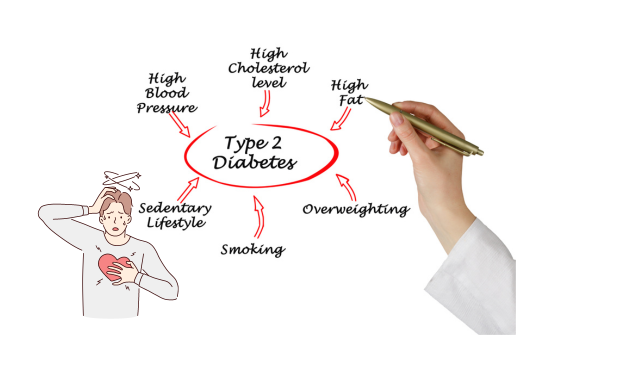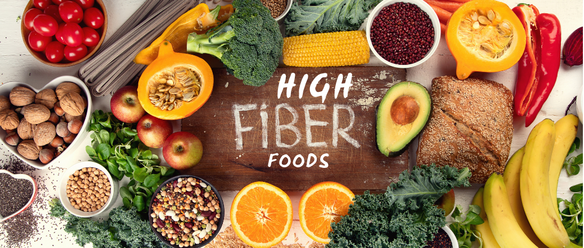You may already know that incorporating high-fiber foods into your diet can help with digestion and keep you feeling fuller longer, but did you know that they can also play a significant role in weight loss? High-fiber foods not only aid in promoting overall health but can also be a powerful tool when it comes to shedding those extra pounds. In this blog post, we will explore into the myriad benefits of high-fiber foods for weight loss and explore how you can make them a key component of your weight loss journey.
High-Fiber Foods and Weight Management
Role of Fiber in Weight Loss
A diet rich in high-fiber foods can play a significant role in weight management. Fiber helps you feel full and satisfied after meals, reducing the chances of overeating and snacking on unhealthy foods throughout the day. Additionally, high-fiber foods take longer to digest, keeping you feeling fuller for longer periods.
Types of Fiber and Their Effects on Weight
To understand the impact of fiber on weight loss, it’s necessary to know the different types of fiber and how they affect the body. Soluble fiber dissolves in water and forms a gel-like consistency in the gut, slowing down digestion and promoting a feeling of fullness. On the other hand, insoluble fiber adds bulk to the stool and helps regulate bowel movements, aiding in overall digestion and nutrient absorption.
| Type of Fiber | Effect on Weight |
|---|---|
| Soluble Fiber | Promotes feeling of fullness and slows digestion |
| Insoluble Fiber | Aids in digestion and regulates bowel movements |
In the matter of weight management, incorporating a variety of high-fiber foods into your diet is key. Fiber-rich foods like fruits, vegetables, whole grains, and legumes not only help in controlling hunger and promoting satiety but also contribute to overall gut health and nutrient absorption. By understanding the different types of fiber and their effects on weight, you can make informed choices to support your weight loss journey effectively.
- This breakdown of fiber types highlights the importance of including a variety of sources in your diet to maximize weight loss benefits.
Strategies for Incorporating High-Fiber Foods
Daily Fiber Intake Recommendations
You should aim to consume around 25-30 grams of fiber per day to support weight loss and maintain overall health. Fiber-rich foods such as fruits, vegetables, whole grains, legumes, nuts, and seeds can help you achieve this goal.
Tips for Adding More Fiber to Your Diet
Adding more fiber to your diet can be easier than you think with a few simple tips. Start by incorporating whole grains like quinoa or brown rice into your meals, snacking on fruits and vegetables, and including beans or lentils in soups and salads. This can help increase your fiber intake and keep you feeling full and satisfied.
- Include a serving of fruit or vegetables in every meal
- Choose whole grain options over refined grains
- Snack on nuts, seeds, or popcorn for a fiber boost
For instance, adding chia seeds or flaxseeds to your morning smoothie or oatmeal can significantly increase your fiber intake. This simple addition not only adds texture and flavor to your meals but also provides a plethora of health benefits.
The Health Benefits Beyond Weight Loss
Digestive Health and Regularity
Weight loss is not the only benefit of consuming high-fiber foods. Fiber plays a crucial role in maintaining digestive health and regularity. Soluble fiber helps to soften stool and make it easier to pass, reducing the risk of constipation. Insoluble fiber adds bulk to the stool, helping promote regular bowel movements and prevent digestive issues such as bloating and discomfort.
Fiber’s Impact on Chronic Diseases
Any discussion about the benefits of high-fiber foods would be incomplete without mentioning their impact on chronic diseases. A diet rich in fiber has been linked to a reduced risk of developing various chronic conditions, including heart disease, type 2 diabetes, and certain types of cancer. The soluble fiber found in foods like oats, beans, and flaxseeds helps lower cholesterol levels and stabilize blood sugar, while the insoluble fiber aids in maintaining a healthy gut microbiome.
Impact: Including a variety of high-fiber foods in your diet can have a profound impact on your overall health and well-being. By reducing inflammation, regulating blood sugar levels, and promoting a healthy weight, fiber can help lower your risk of chronic diseases and improve your quality of life.

Potential Challenges and Considerations
Adjusting to a High-Fiber Diet
To successfully incorporate high-fiber foods into your diet, it is vital to make gradual adjustments. Suddenly increasing your fiber intake can lead to digestive discomfort such as bloating, gas, and stomach cramps. To ease the transition, drink plenty of water, add fiber-rich foods like fruits, vegetables, and whole grains slowly, and listen to your body’s cues. Over time, your digestive system will adapt to the higher fiber intake, and these discomforts should diminish.
When to Consult a Professional
On your weight loss journey with high-fiber foods, it is crucial to consult a healthcare professional if you experience persistent and severe digestive issues, such as extreme bloating, constipation, or diarrhea. These symptoms could be a sign of an underlying digestive disorder or medical condition that requires specialized treatment. A registered dietitian can also provide personalized guidance on how to optimize your high-fiber diet for weight loss based on your individual needs and health goals.
Challenges may arise when initially increasing fiber intake, as the sudden change can disrupt digestion and lead to discomfort. To overcome these challenges, gradual adjustment, adequate water intake, and monitoring symptoms are key. Seeking professional guidance is important when encountering severe or persistent digestive issues to rule out any underlying conditions and receive tailored advice for your dietary needs.
Summing up
To wrap up, incorporating high-fiber foods into your diet can be a beneficial strategy for weight loss. These foods help you feel full and satisfied, reducing your overall calorie intake. They also promote healthy digestion, stabilize blood sugar levels, and support a healthy gut microbiome. By choosing whole, nutrient-dense sources of fiber like fruits, vegetables, whole grains, nuts, and seeds, you can not only manage your weight more effectively but also improve your overall health and well-being. It’s important to pair a high-fiber diet with regular physical activity and a balanced intake of other important nutrients to achieve optimal weight loss results. Embracing high-fiber foods as part of a healthy lifestyle can be a sustainable and effective approach to reaching your weight loss goals.
References
- National Institutes of Health (NIH) – “Dietary Fiber”: The NIH provides comprehensive information on various health topics, including dietary fiber and its impact on weight loss and overall health. Available at: National Institutes of Health – Dietary Fiber
- WebMD – “Dietary Fiber: Insoluble vs. Soluble Fiber”: WebMD offers accessible health information, including details on different types of dietary fiber and their effects on weight loss. Available at: WebMD – Dietary Fiber: Insoluble vs. Soluble Fiber


